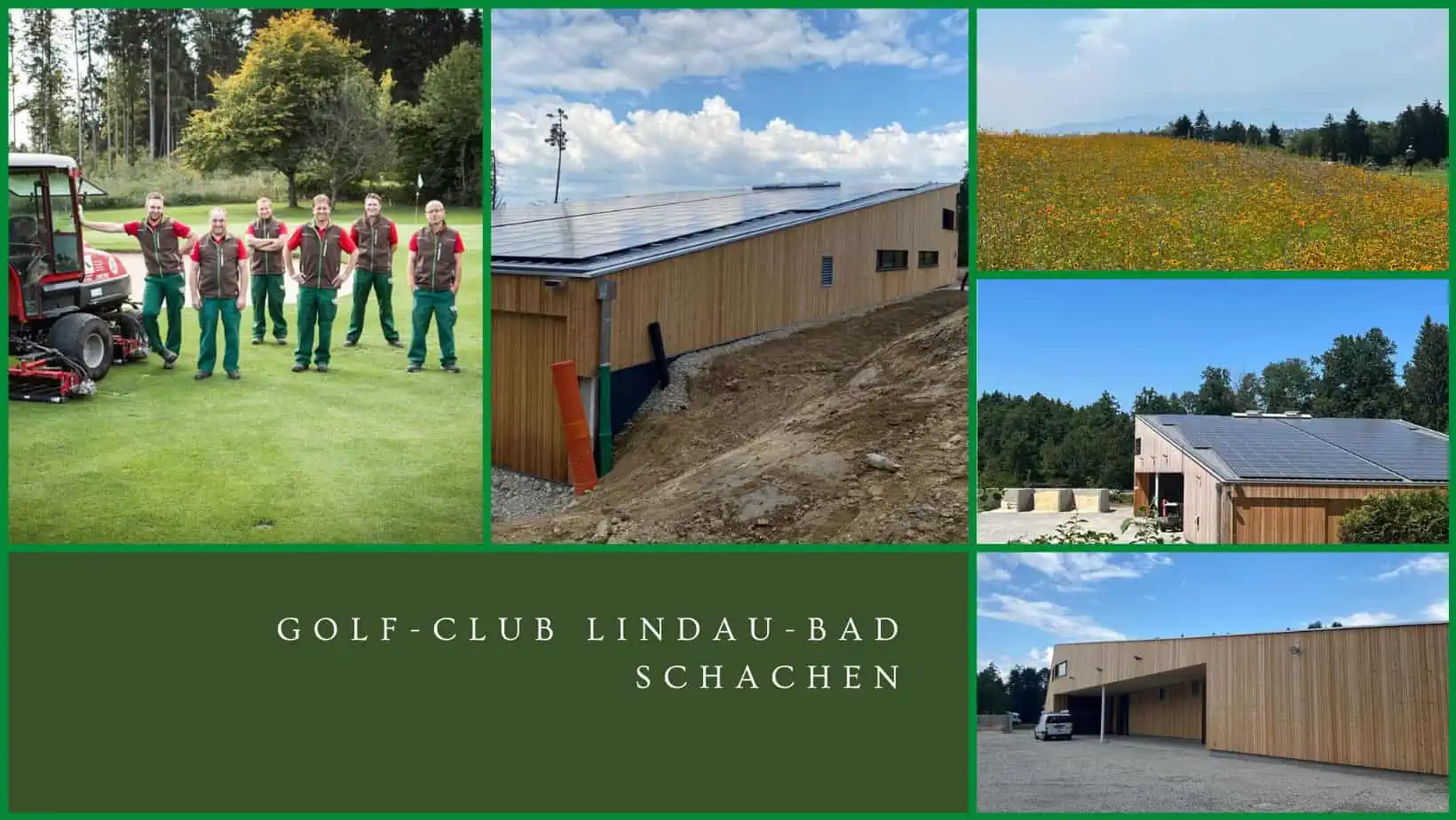GC Lindau-Bad Schachen: Energy turnaround achieved
Manfred Schmid laughs: “I’m the girl for everything here”. In any case, the head greenkeeper of the Lindau-Bad Schachen Golf Club is not only the master of greens, but also a driver of energy transformation of the club near Lake Constance. At its core is the depot, where Schmid and his greenkeeper colleagues work every day. With its new building, GC Lindau-Bad Schachen has achieved in the past three years what many golf courses in Germany are currently pondering – the complete energy turnaround.
Anyone visiting the club’s depot today will come across an attractive wooden building of modern design, with a large roof equipped with the latest generation of photovoltaic panels. “99 kW peak power” Schmid explains enthusiastically, plus 94.5 kWh storage capability in batteries. In practice, this means that the club is almost self-sufficient in terms of energy. “Last year, we only bought 36 kilowatt hours of electricity for the depot, which is really nothing,” Schmid sums up enthusiastically.
“We are on the cutting edge”
The modern energy installation consists of the photovoltaic system, underfloor heating and air-heat pump in the service yard. The energy generated in the depot is used for the entire clubhouse, including the catering facilities, as well as for all electrically operated greenkeeping equipment such as green irons, transport vehicles, hedge trimmers and, of course, for the irrigation pumps. The electric carts are also powered by the self-generated electricity. The cost savings on electricity are 20,000 to 22,000 euros per year. “We are up to date,” is the conclusion.
How to get there? At GC Lindau-Bad Schachen, there was no alternative to a new building for the greenkeeping machinery. The old building was extremely dilapidated and no longer met requirements in many areas. “We just had to go for it,” explains Achim Steinfurth, a PGA professional but also a board member. For the investment, a levy of 350 euros per person was enforced on the members by the board under the leadership of President Werner Karg.
It was not until the start of planning that the environmentally friendly options for the construction then crystallized: “After all the tradesmen and also the architects advised us to go for the solution with photovoltaics and an air-source heat pump, an economic efficiency calculation was carried out. Then everything was actually clear,” explains Schmid, who had favoured the sustainable version from the start. “The board was behind it and construction was done during the Corona years. Most of the power at the golf facility is used during the day anyway, when power is also generated. In the winter, when there’s less production, there’s also a lot less demand.”
With the newly built depot as a show-piece, another project also became possible for GC Lindau-Bad Schachen: participation in the Golf & Nature program of the German Golf Association. “We always wanted to be involved in that, but because of our old depot, we never had the confidence as a board to do that,” Steinfurth explains. Now they are in top shape, with an oil separator, modern washing area and first-class workrooms.
The Golf & Nature program has benefited from the support of the Bavarian Golf Association, which makes it easier for clubs to become certified. To this end, the club has invested, for example, in the creation of new species-rich meadows and established contact with the local beekeeper, who now produces the club honey with his six bee colonies. Even the scattered fruit trees, which are typical of the landscape here at Lake Constance, are now seen with different eyes by the club members and those responsible since the start of the project. “We definitely want to do more here,” Steinfurth notes.
The GC Lindau-Bad Schachen has its sights firmly set on the goal, the gold award in 2024. Then the golf course celebrates its 70th anniversary. But it is already an example of how a classic golf club can position itself for the future. Incidentally, there is no end in sight to the transformation. Manfred Schmid, at any rate, is flirting with electric green mowers: quiet, environmentally friendly, powered by green electricity. “We’ll see when that works out,” he explains. He sounds optimistic.








